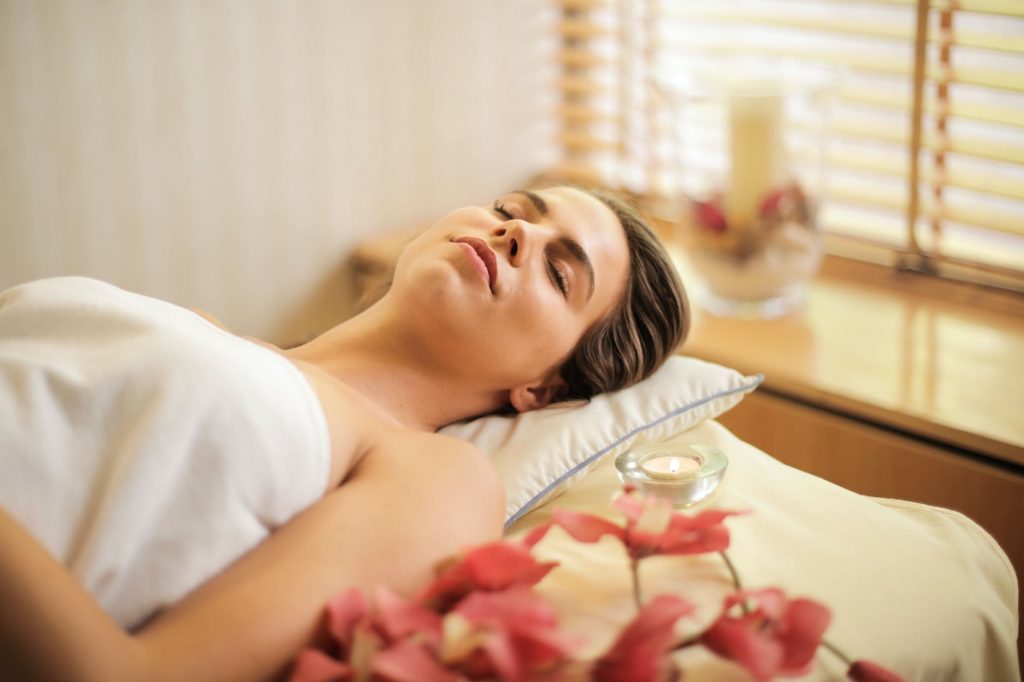
- Causes of Occipital Neuralgia
- Sleeping Position Matters
- Massage Often Helps
- Gentle Exercises
- Topical Medications for Pain Relief
- Talk to Your Doctor
The occipital nerves run from the top of the spinal cord and up into and around the scalp. Occipital neuralgia is a disorder in which the nerves are inflamed or injured, causing intense pain. When the disorder develops, it makes it very difficult to function and sleep.
Causes of Occipital Neuralgia
This condition is not a migraine or regular headache because it is due to problems specifically with the occipital nerves. There are a number of potential causes, and knowing the cause can help with developing the appropriate treatment plan. They include but are not limited to:
- Injury to the back of the head
- Tight neck muscles
- Cervical (upper spine) disc disease
- Osteoarthritis
- Blood vessel inflammation
- Medical conditions like gout and diabetes
- Infection
- Overuse injuries due to regularly bending the head down or forward
The nerves are injured directly, or pressure is placed on the nerves due to tight muscles or inflammation. The pain associated with occipital neuralgia is different than the pain associated with a migraine. Patients describe it as sharp, jabbing, throbbing, and intense pain. It may feel like an electric shock.
Sleeping Position Matters
The pain of occipital neuralgia can make the movement of the neck painful. The scalp may feel tender, or pain is felt behind the eye or light sensitivity develops. The pain and tenderness in the neck and head area make it difficult to get a good night’s sleep.
Failing to get adequate sleep and sleeping in the wrong position can intensify the pain. In fact, sleeping with a poor posture is a top cause of occipital neuralgia. People say they wake up with a stiff neck, which means a muscle is strained and nerves inflamed.
The best way to sleep with occipital neuralgia is in a position that does not place more pressure on the nerves. Following are some guidelines:
- Sleep on your back
- Use a pillow that supports the neck and keeps the head aligned with the body (neutral position)
- Avoid sleeping with the neck bent because that can increase pressure on the nerves
- If sleeping on your side, be sure to use a pillow that does not raise the head higher than the shoulders

Some people have trouble sleeping on their back. If sleeping on your side, use a pillow firm enough to support the neck and keep the spine in alignment.
Massage Often Helps
The best treatment for occipital neuralgia is often massage. It is so beneficial because it helps relieve the pain of occipital neuralgia due to tight neck muscles and muscle tension that is putting pressure on the nerves. Occipital neuralgia massage can be delivered through:
- A physical therapist
- A professional massage therapist
- Self
The purpose of the massage is to loosen tight neck muscles to ease nerve entrapment. A physical therapist or massage therapist will use occipital neuralgia massage techniques that focus on the trigger points in suboccipital muscles. These are the muscles located underneath the occipital bone forming the base of the skull in the back of the head.
The muscles are supplied by the suboccipital nerves. The massage techniques may also address the jaw area because of the way the suboccipital muscles are balanced by jaw muscles.
Even if you obtain treatment from a professional, it is wise to also learn how to do an occipital neuralgia self-massage for pain management. Place your fingertips at the base of the skull and gently apply pressure. Another way to self-massage is to lie on your back and place a rolled towel underneath the head at the neck area. The towel provides pressure to relieve tension.
Gentle Exercises
A few exercises that may help relieve muscle tension are neck circles, neck stretches, and chin tucks. When doing neck stretches or chin tucks, stand with your back against the wall and only pull your head back far enough to meet the wall.
The next question is, “What exercises should I avoid with occipital neuralgia?” Exercises that cause excessive tension in the neck muscles should be avoided. Lifting heavy weights for exercise or strenuous exercise can over-tighten muscles and compress the occipital nerves.
Topical Medications for Pain Relief
There are some topical medications in gel, cream, and lotion forms for occipital neuralgia. They are mostly for treating nerve pain and are available in over-the-counter and prescription forms. For example, the generic Capsaicin cream can decrease a substance in the body that passes pain signals to the brain.
One very nice feature of topical medications is that it is easy to learn how to apply the cream for occipital neuralgia. Apply a thin layer of the cream on the skin on the back of the neck and gently rub it in. Some of the gels and creams used to treat sunburn may reduce pain due to occipital neuralgia, like xylocaine and EMLA (lidocaine and prilocaine) cream that act as mild local anesthetics.
Talk to Your Doctor
The intense pain of occipital neuralgia is distressing, but it often can be managed with conservative treatments. Besides the ones mentioned, some relief may be found by applying ice to freeze the occipital nerve at the occipital notch, heat compresses to loosen muscles, rest in a quiet room, and over-the-counter anti-inflammatory medications. Using good posture day and night is one of the best ways to relieve neck pain and prevent further incidents of occipital neuralgia.
If home treatments do not work, be sure to talk to your doctor. The doctor can offer the next level of treatment, like prescription muscle relaxants, steroid shots, or nerve blocks.
